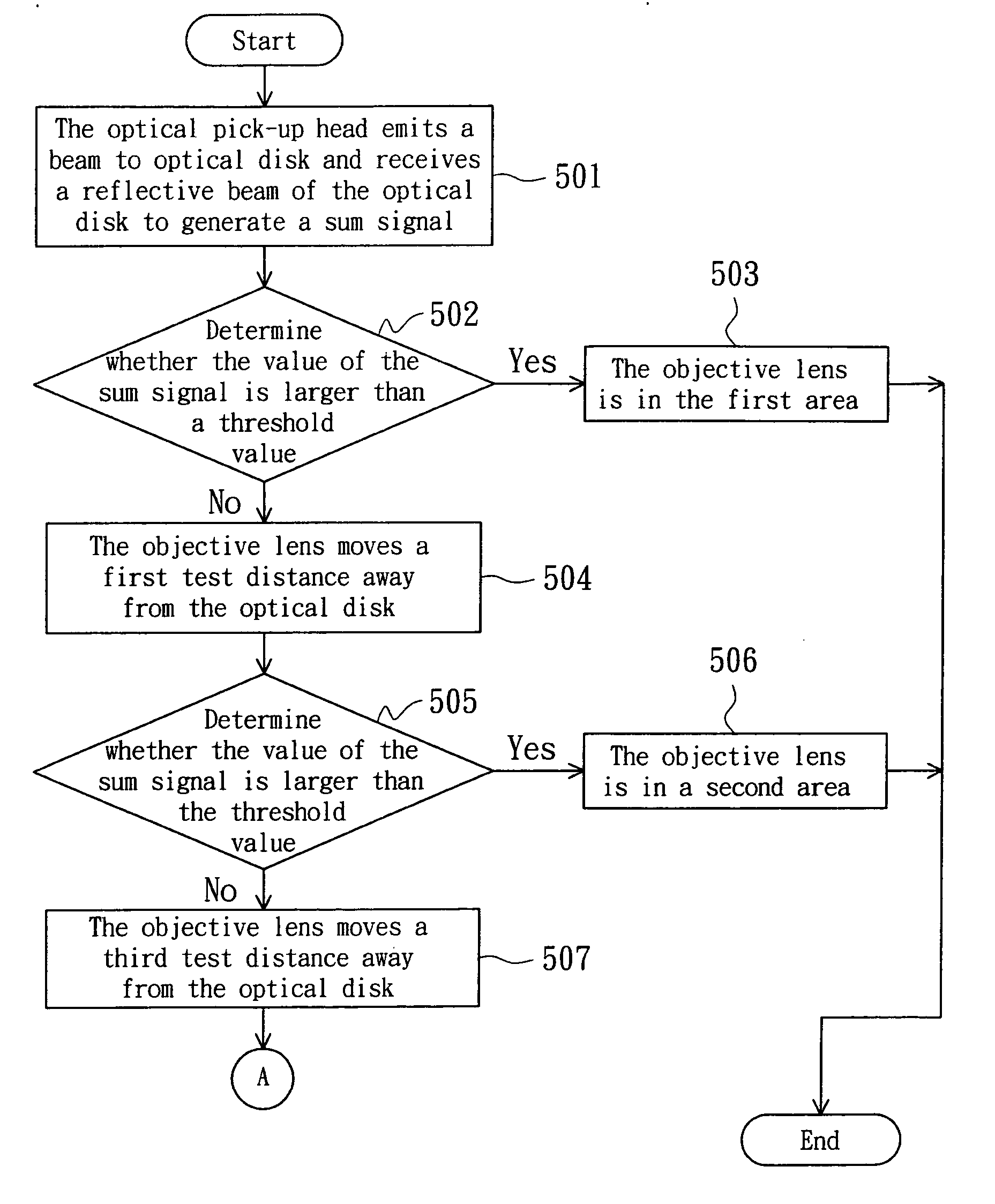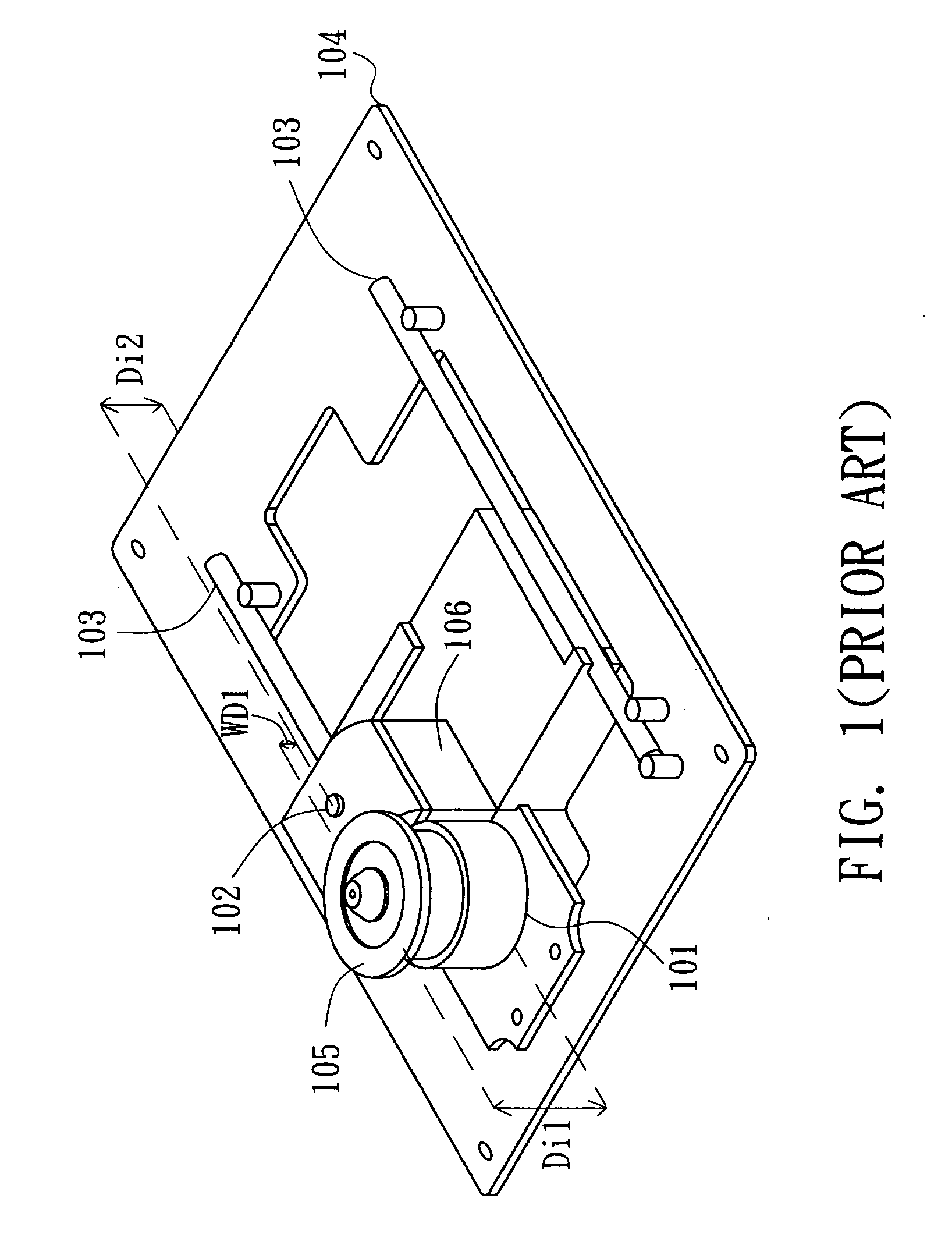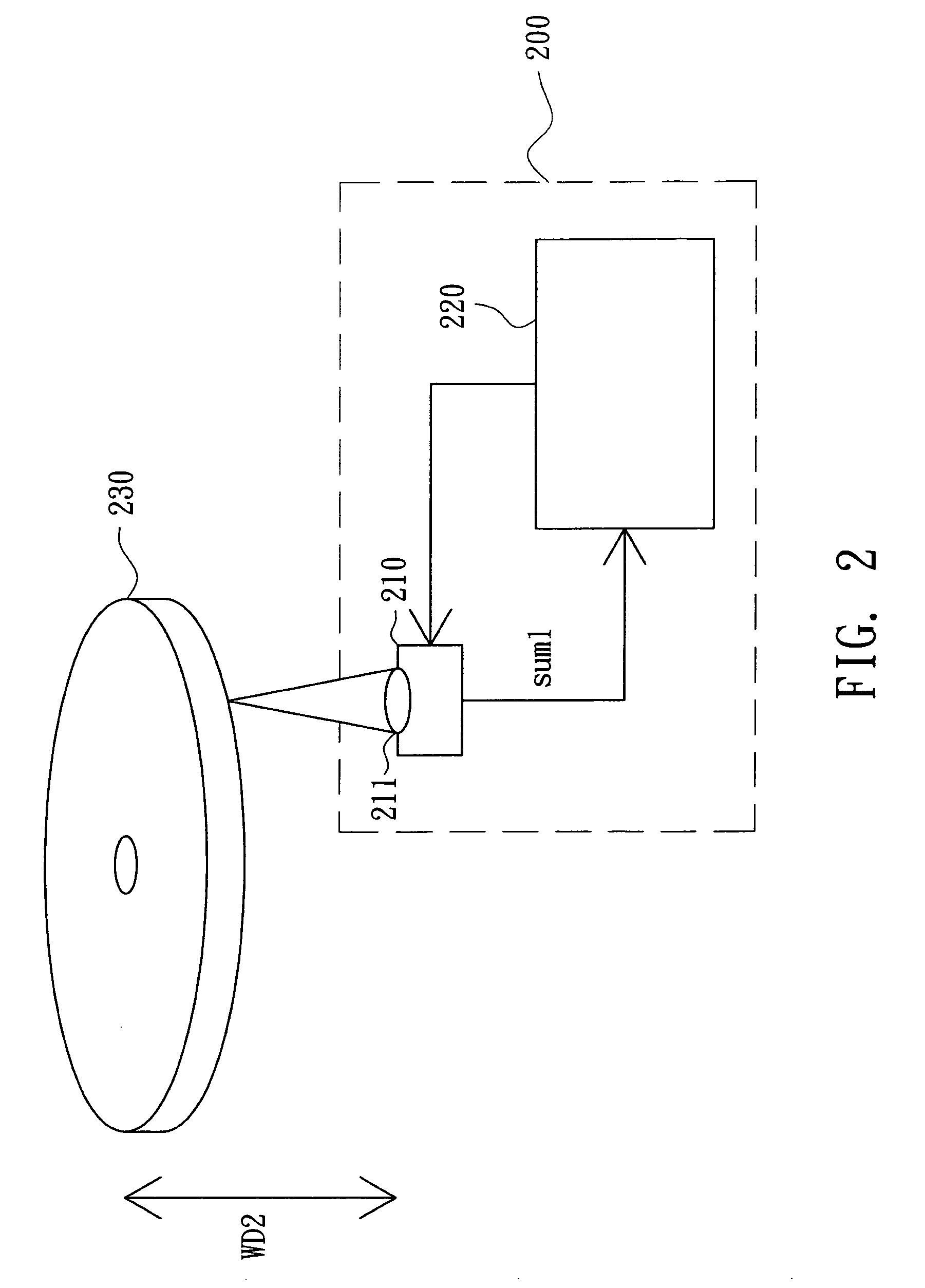Optical disk drive and method of determining working distance
- Summary
- Abstract
- Description
- Claims
- Application Information
AI Technical Summary
Benefits of technology
Problems solved by technology
Method used
Image
Examples
Embodiment Construction
[0022] Referring to FIG. 2, an optical disk drive according to a preferred embodiment of the invention is shown. The optical disk drive 200 is for accessing a optical disk 230. The optical disk drive 200 includes an optical pick-up head 210 and a controller 220. The optical pick-up head 210 includes an objective lens 211. The distance between the optical disk 230 and the objective lens 211 is defined as a working distance WD2. Examples of the optical disk 230 include a Blu-ray Disk (BD).
[0023] Referring to FIGS. 3A˜3C, a photo-detector of the optical pick-up head 210 is shown. The photo-detector is disposed in the optical pick-up head 210. The photo-detector has sub-photo-detectors A, B, C and D. The sub-photo-detectors A, B, C and D respectively generate a signal VA, a signal VB, a signal VC and a signal VD according to the beams respectively received by the sub-photo-detectors A, B, C and D. The value of the focus error signal Fe is expressed as follows:
Fe=(VA+VB)−(VC+VD);
[0024]...
PUM
 Login to View More
Login to View More Abstract
Description
Claims
Application Information
 Login to View More
Login to View More - R&D
- Intellectual Property
- Life Sciences
- Materials
- Tech Scout
- Unparalleled Data Quality
- Higher Quality Content
- 60% Fewer Hallucinations
Browse by: Latest US Patents, China's latest patents, Technical Efficacy Thesaurus, Application Domain, Technology Topic, Popular Technical Reports.
© 2025 PatSnap. All rights reserved.Legal|Privacy policy|Modern Slavery Act Transparency Statement|Sitemap|About US| Contact US: help@patsnap.com



